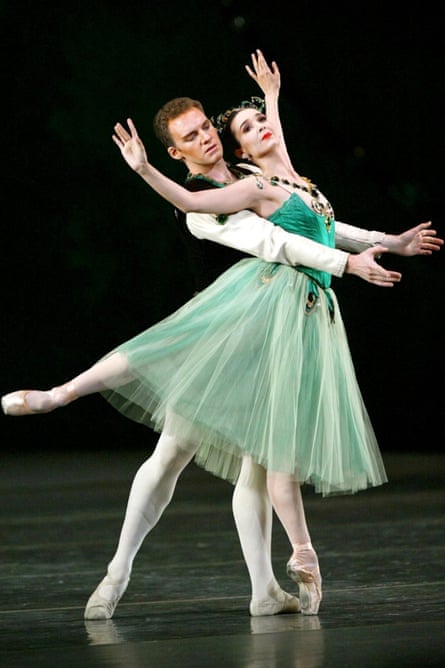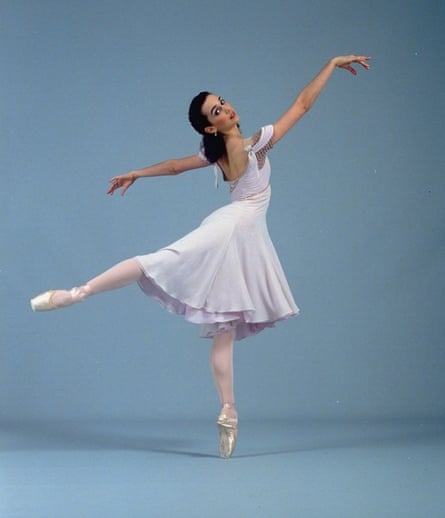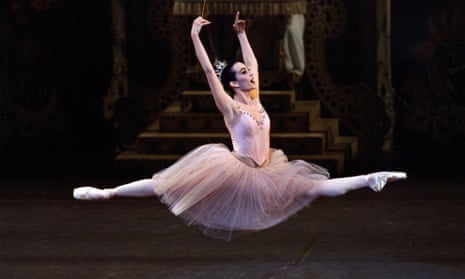I’m often asked how we remember all of the steps to the vast repertoire we dance at New York City Ballet. Corps members might dance 20 ballets in a short six-week season. Principals might dance 10 or more, and often we will rehearse three or four ballets during the day and then perform a completely different ballet that night.
I find the music to each ballet to be the key to remembering all of the steps. With choreography as musical as what we’re blessed with in my company, someone just has to sing the music to me, and my body will do the steps. Each ballet must have its own little piece of my brain that is reserved just for that ballet, ready to be called up whenever the music is played.
When we’re learning a ballet for the first time, whether it’s new choreography or one of the famous ones already in the company’s repertory, we do it systematically, going forward in chunks and then going back to the beginning to dance the piece through up to the point we have learned. Once we can successfully get from the beginning up to where we stopped learning, we then go forward to learn another chunk before returning to dance it from the beginning again. Layer by layer we train our ear to hear the music and how it matches up to the steps. With enough repetition, the music is inevitably linked by some mysterious connection to our muscle memory so that eventually, we don’t have to think about the steps. Our bodies know what to do, leaving our brains free to give flight to our imaginations in performance.
It is certainly easier to learn a ballet if I’m already familiar with the music or have seen the ballet before so that I have a frame of reference for what I’ll be dancing. If I have not seen the ballet before, I’ll watch a tape if possible so that my brain can have a map in place for where my part in the ballet will go. However, I try not to watch tapes too often if I can help it because it is too easy to find myself mimicking the ballerina dancing the part on the tape; I’ve always wanted to do parts in my own way, even while I take inspiration and guidance from the wonderful ballerinas who have gone before me. Balanchine and Robbins often made different versions for different dancers, and they wanted their ballerinas to be unique. Though both choreographers have now passed away, their ballet masters try to follow in their spirit as they teach each successive generation of dancers these masterpieces. Though the steps might be mostly the same, artistry is left up to the individual.
And each dancer’s artistry is radically different from another’s, so that ballets change and evolve according to which dancer is dancing which part. Most of the ballets in the repertory of the New York City Ballet have no story line; there is often drama, but that drama comes from the music and the steps. I’ve realised that a lack of story line actually gives the dancers more opportunity to place their own personal interpretation into a role.
For example, in the last movement of George Balanchine’s Vienna Waltzes, a solitary woman dances in a ballroom with a man playing a partner who materialises as if from her imagination. There is a moment when the music comes to a standstill and then starts over, slowly and haltingly. I’ve never danced the role and have only watched it, but I’ve always thought that at that moment, the woman’s imagination becomes so powerful that she conjures up a real man from her fantasy world. I’ve seen some ballerinas interpret it this way, and have seen others remain remote, looking at their partners as if they were not quite there.
One day while watching a rehearsal of Vienna, I asked my friend and fellow principal dancer Tyler Angle, “Do you think he becomes a real man there?”
Tyler looked at me with interest and said, “You know, I’ve seen it done both ways. It depends on the ballerina – I’ve always wanted him to become real. But Jenny, you and I are always searching for a story even when there is none.” And he is right about that. I’m one of those dancers who searches for some hint of a story, even in the plotless ballets.

Musicians from the New York City Ballet orchestra have told me that they love to play for our company because of the great music the choreographers have chosen for the ballets we perform. But what may be thrilling for a musician to play can be difficult for a dancer to decipher, and some ballets have more difficult music than others. These I have a harder time learning and assimilating into my body. If I have to rely on counting the music to keep my place in the choreography, I find I have to use a different part of my brain that isn’t a natural part of my dancing. These ballets take more focus, and I’m often more nervous for them; sometimes the second I let the performance side of myself take over, I stop counting the music. With these ballets, I have to do a lot more physical repetition and mental dissection of the music before I feel that I really know the ballet.
Also, the music we hear from the orchestra is often completely different from what we have been hearing in the studio. We have wonderful rehearsal pianists who play for us during the day, but often the piano accents notes differently than a full orchestra does. The arrangement written for the piano might highlight different sounds and melodies from what we would hear from the orchestra pit during a performance. Also the piano can set a more obvious tempo, whereas sometimes the orchestration is written as more of a wash of sound. There have been plenty of stage rehearsals, particularly of brand-new choreography, that have fallen apart completely because none of the dancers could tell where they were in the music. This is of course incredibly frustrating for the choreographer, and the dancers usually go into a panic as what seemed so certain and comfortable just the day before suddenly becomes an unknown.
This happened to us the first time we had an orchestra rehearsal for a ballet that Peter Martins made called Naïve and Sentimental Music to music by John Adams. It used almost every principal dancer on the roster, 26 of us either onstage at the same time or just exiting and entering. We were all experienced and used to dancing under every kind of stress, but when we were onstage for our first orchestra rehearsal and suddenly couldn’t find a beat or a melody in the music, we just stood around and stared at each other, befuddled. Peter had anticipated the problem and rehearsed us often to a CD of the orchestra version of the music, but somehow the orchestra sounded wildly different from the CD’s version of the piece. It was hard for us to find any kind of rhythm or melody to anchor our steps. In group sections where we were supposed to be dancing together, it looked like we were all doing different choreography because we were so out of sync. Peter was obviously very upset, because the premiere was only days away.

We eventually figured out that in every section, there was somebody who could hear where we were supposed to be. Those who were musically lost just found a way to watch that dancer and stay together with his or her movements. We counted for one another and gave one an- other significant looks. During a section where the women danced in a revolving circle and we couldn’t make eye contact with one another, Janie Taylor called out the counts for us. Before a finale step that Jennie Somogyi and I led off, we would look at each other across the stage, nod, and take a large preparatory step so that we started at the same time. At other times, when in doubt, we just watched whoever was in front, and even if we thought she was wrong, we did what she did.
Somehow we pulled it off, but we were all stressed about it. For this ballet, it was not necessarily the dancing that was hard but the musical and mental focus required to do it correctly. I’m not sure I’ve ever seen that many principal dancers counting music loudly at the same time, both in the wings and onstage, looking questioningly at their opposites and partners to see if they were correct. But in the end, hopefully we looked professional from out front! We tried not to move our lips too much as we counted…
- From Dancing Through It by Jenifer Ringer, published on 24 February 2015 by Penguin, an imprint of Penguin Publishing Group, a division of Penguin Random House LLC. Copyright by Jenifer Ringer, 2015.
